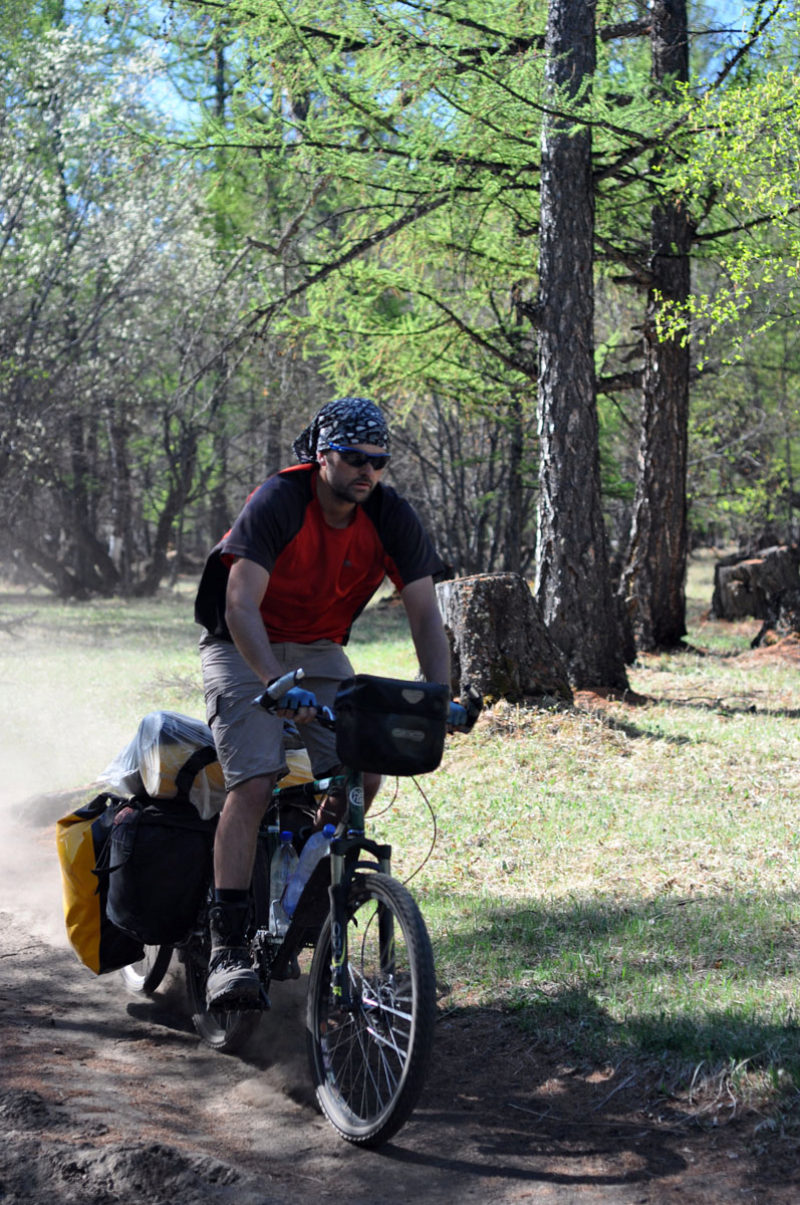GUIDES

How to build the perfect expedition bike Part 2
In the first installation of the series I wrote the frame and suspension. In this one I will talk about the drivetrain:
Bicycle drivetrain systems are used to transmit power (Wikipedia). If you are choosing components or checking out a bike for touring you need to have a reliably functioning drivetrain because it is what propels the bike.
Shimano components are widely available and reliable. The mountain bike component range of Deore, XT and XTR are built to withstand abuse whereas road components may compromise strength to reduce weight.
I have used an XTR rear mechanism for my tours and it functioned well although if I had bought it myself I would have gone for Deore or XT (the XTR one was sponsored). I have only had to replace the jockey wheels which are cheap and widely available. Even non-shimano ones can be salvaged off any ‘spam’ bike on the road. XTR shifting is very accurate and they rarely need adjustment. Front mechanisms are less crucial so you can get away with a cheaper one.
At first I used an XTR rear cassette which lasted for ages with no wear. A bonus of the XTR (and generally higher end cassettes) is that they are lighter. The cassette cogs are rings rather than closed discs which allows for them to be cleaned a lot easier (e.g. with a toothbrush).
It’s Achilles heel was the way the sprockets were joined together which meant they failed and loosened over time. In hindsight this was a weight saving design rather than built for durability. Currently I am running an 8 speed, bottom of the range Shimano cassette which is a bit heavier but fine.
8 speed means that the cassette has 8 sprockets on it; the chain is slightly wider and therefore stronger. It is important that you also match this with 8 speed shifters although it’s okay to use a 9 speed rear mechanism. On a tour you will most likely change individual components when they wear out. I took a couple of spare 8 speed chains (which have the quick release chain link) and swapped them every couple of thousand kilometres to prolong their life.
Most days I would clean the chain with a rag and apply oil. You can tell if it needs oil if it makes more noise than usual and the chain looks dry. If you are experiencing chain-skip / poor shifting then it might be that either your chain, cassette, or crankset chainrings are worn. Ideally you would replace all three. Matching a new chain with an old cassette or chainrings will wear the chain quicker and vice versa.
The bottom bracket is the component onto which the cranks fit. It is screwed into the ‘BB shell’ on the frame. In my experience bottom brackets are usually pretty maintenance free if you buy one from a reputable brand such as Shimano. However, I used an SKF bottom bracket for my touring and it lasted for about 10,000km before the shaft snapped off. This, I was assured was due to a faulty batch, and I was provided with a replacement under the 10 year warranty.
SKF are a company who are well known for making high quality bearings in the engineering industry and so they are well placed to bring that expertise into the cycling market. I have also used a Truvativ bottom bracket and I would recommend either going for an ISIS splined attachment or a square axle (make sure you keep the crank bolts tight). In 2022 there are totally new technologies for bottom brackets so do your research.
In terms of crankset; Race Face, Shimano or FSA will serve you well. I bought a discounted FSA X-drive set which is still going strong. It is rare that a set of cranks would fail and if they do they it’s probably because there is a fault in the material and it is worth contacting to the manufacturer who might replace it. Please support your local bike shops and frame builders.
Written around 2012. Updated 2022. Part 2 in 4 part series.
Read how to build the perfect expedition bike - Part 3